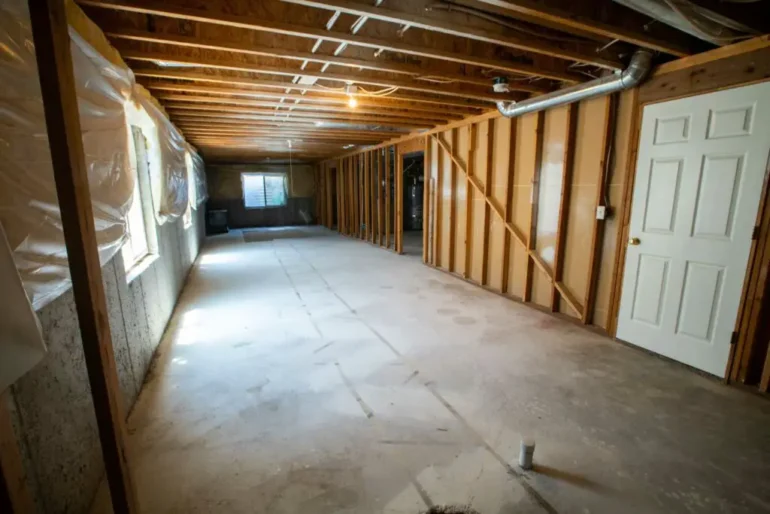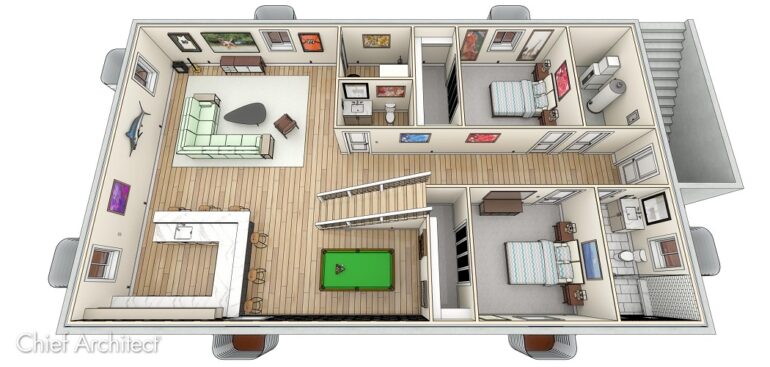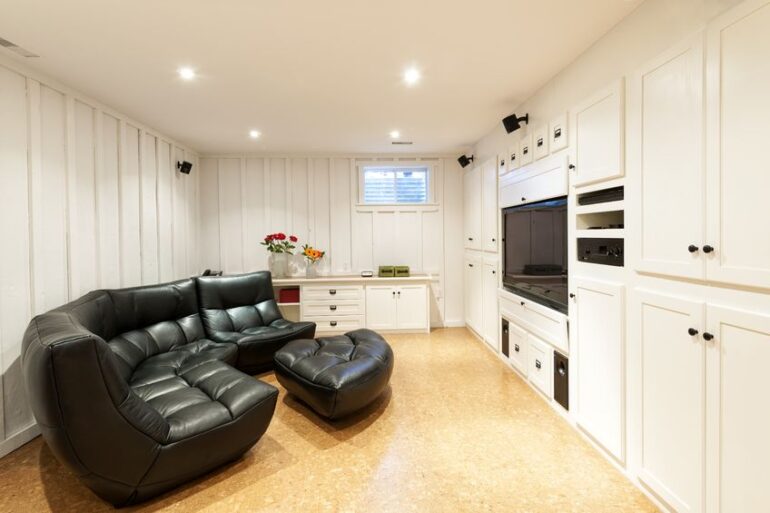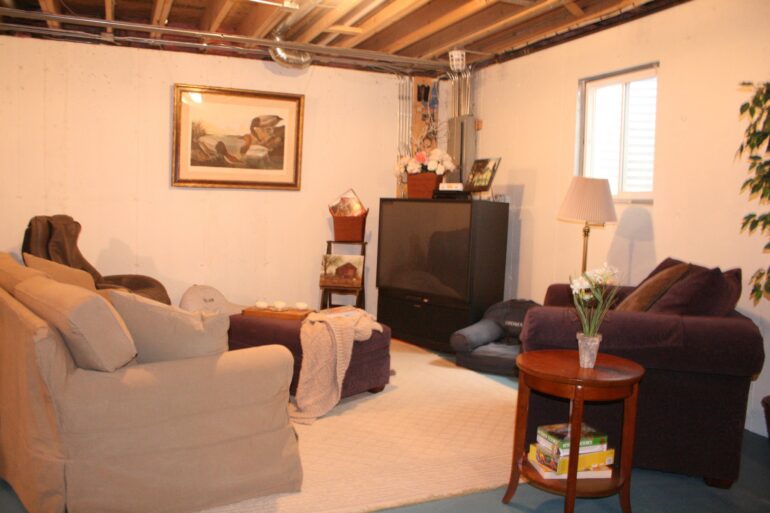The basement, often underutilized in many homes, holds immense potential for creating additional living space. By transforming your basement into a functional and inviting living area, you can enhance your home’s value and provide a versatile space for various activities. However, tackling a basement renovation project can be daunting without proper planning and design considerations.
There has been a notable surge in home improvement project budgets recently. The 2022 U.S. Houzz and Home Study reports that homeowners now spend a median of $18,000 on renovations, compared to $15,000 in 2020. This represents a noteworthy 20% increase, marking the first time since 2018 that homeowners intend to allocate more resources toward their home improvement undertakings.
Kenosha, Wisconsin, a vibrant city on Lake Michigan’s shores, showcases a thriving home improvement scene. With its rich history and growing population, Kenosha residents take pride in maintaining and enhancing their homes. According to recent statistics, the home improvement industry in Kenosha has witnessed steady growth over the past few years, with an increasing number of homeowners investing in renovation projects.
This article will provide a comprehensive guide and practical tips to help you successfully transform your basement into a space that meets your specific needs and preferences. From assessing the space and planning the layout to optimizing lighting and selecting suitable materials, we will cover all aspects of basement remodeling. Let’s dive in and discover how to unlock the full potential of your basement.
Assessing the Potential of Your Basement

Before starting a basement remodeling project, assessing the space’s potential and limitations is crucial. This step will help you determine the feasibility of your ideas and make informed decisions throughout the renovation process. Many homeowners in Kenosha are opting for a basement remodel to transform their underutilized spaces into functional and inviting living areas.
You can also start a Kenosha basement remodel project to transform the space into a cozy and inviting area for entertainment and relaxation. We recommend Matrix Basement Systems for a high-quality and cost-effective basement remodel.
- a) Evaluate structural integrity: Begin by inspecting the foundation, walls, and flooring of your basement. Look for signs of water damage, cracks, or other structural issues that need to be addressed before proceeding with the renovation.
- b) Assess utility placement: Take note of the location of existing utilities, such as plumbing, electrical systems, and HVAC units. Consider how these elements may impact your remodeling plans, as they may need to be relocated or integrated into the new design.
- c) Consider ceiling height and obstructions: Measure the ceiling height in various basement areas, as this will affect the types of activities and features you can incorporate. Identify any protruding pipes, ductwork, or other obstructions requiring modifications.
Planning the Layout and Functionality

Creating a well-thought-out layout is essential to maximize the functionality and flow of your basement living space. Consider the following factors when planning the layout:
- a) Zoning different areas: Divide your basement into zones based on their intended purposes. For example, designate areas for entertainment, storage, laundry, or a home gym. This zoning approach allows for better organization and efficient use of space.
- b) Prioritizing natural light: Basements can often lack natural light, so it’s important to incorporate strategies to maximize brightness. Position living areas near windows or window wells to bring in natural daylight if possible. Additionally, consider installing light wells or egress windows to enhance the overall ambiance.
- c) Incorporating storage solutions: Basements are ideal for extra storage. Plan and integrate storage solutions such as built-in shelves, cabinets, or hidden storage areas. This will help keep your living space clutter-free and organized.
- d) Considering utility rooms: Determine the location for utility rooms such as laundry facilities, water heaters, or HVAC equipment. Ideally, try to allocate a separate and enclosed space to isolate noise and ensure easy access for maintenance.
Lighting and Ambiance
Proper lighting can significantly impact the ambiance and functionality of your basement living space. Implement the following tips to create a well-lit and inviting environment:
- a) Natural lighting: Maximize natural light by positioning living areas near windows or light wells. If your basement has small windows or lacks natural light, consider enlarging existing windows or adding new ones.
- b) Artificial lighting: Incorporate a layered lighting scheme with a combination of ambient, task, and accent lighting. Recessed ceiling lights can provide general illumination, while task lighting can be installed over work areas or reading nooks. Wall sconces, floor lamps, or table lamps can add warmth and create a cozy atmosphere.
- c) Light colors and reflective surfaces: Use light-colored paints for walls and ceilings to help bounce light around the space. Additionally, consider incorporating mirrors, glass, and glossy finishes to reflect light and make the area feel more spacious.
Choosing Suitable Materials

Selecting appropriate materials for your basement renovation is crucial for both aesthetic appeal and durability. Keep the following factors in mind when choosing materials:
- a) Moisture-resistant flooring: Since basements are prone to moisture, choose flooring materials that can withstand these conditions. Consider options such as ceramic or porcelain tiles, luxury vinyl planks, or engineered hardwood that are moisture-resistant and easy to clean.
- b) Subflooring and insulation: Install a suitable subflooring system that acts as a moisture barrier and helps regulate temperature. Additionally, use insulation materials specifically designed for basements to prevent heat loss and minimize moisture intrusion.
- c) Waterproof wall treatments: Opt for waterproof or moisture-resistant walls to safeguard against potential water damage. Materials like vinyl or fiberglass-reinforced panels are excellent choices for basements.
- d) Ceiling options: Depending on your basement’s style and structural elements, consider different ceiling options, such as drywall, suspended ceilings, or exposed beams. Each option has its own aesthetic appeal and practical considerations.
Creating a Cozy and Inviting Atmosphere

To ensure your basement living space feels warm and inviting, pay attention to the following elements:
- a) Color scheme: Choose colors that promote relaxation and create a cozy atmosphere. Earth tones, neutrals, or warm hues can help achieve this effect.
- b) Furniture selection: Opt for comfortable and appropriately scaled furniture that fits the available space. Consider sectional sofas, ottomans with hidden storage, or built-in seating options to maximize space efficiency.
- c) Area rugs and textiles: Incorporate area rugs and textiles to add warmth and texture to the space. They enhance the visual appeal and provide insulation and noise reduction.
- d) Wall decorations: Hang artwork, family photos, or decorative mirrors to personalize the space and make it feel like an extension of the rest of your home.
Conclusion
Transforming your basement into a functional and inviting living space requires careful planning, creative design choices, and attention to detail. By assessing the potential of your basement, planning the layout, optimizing lighting, selecting suitable materials, and creating a cozy atmosphere, you can create a truly remarkable living area that adds value and enjoyment to your home. Remember to consult with professionals, take advantage of available resources, and familiarize yourself with local building codes for a successful renovation.
